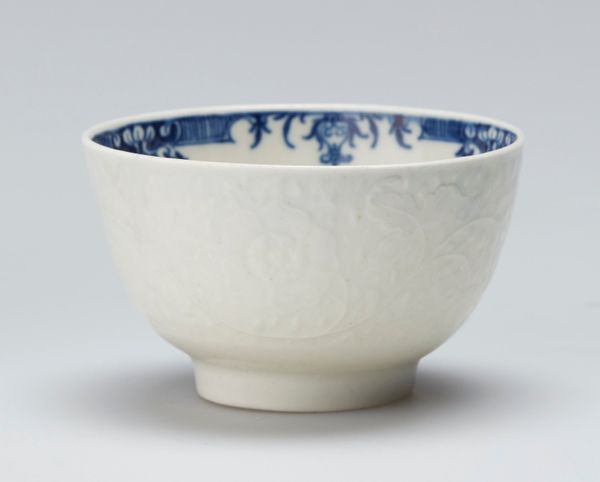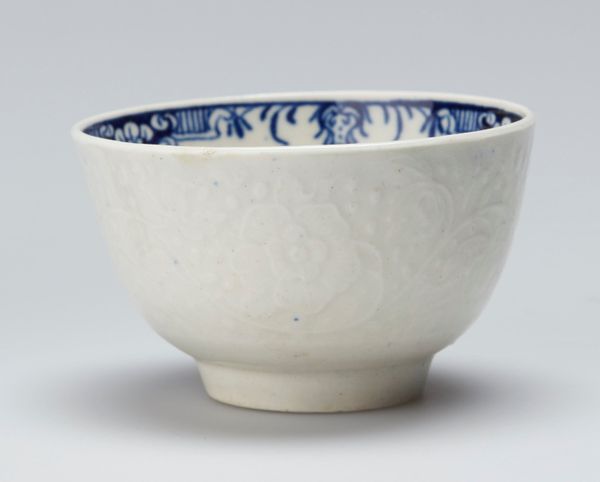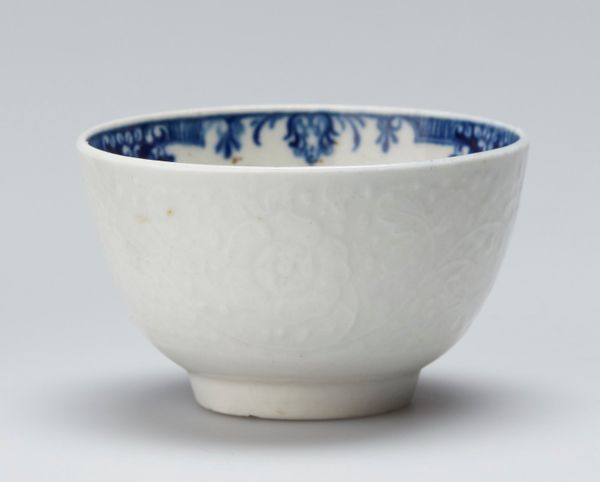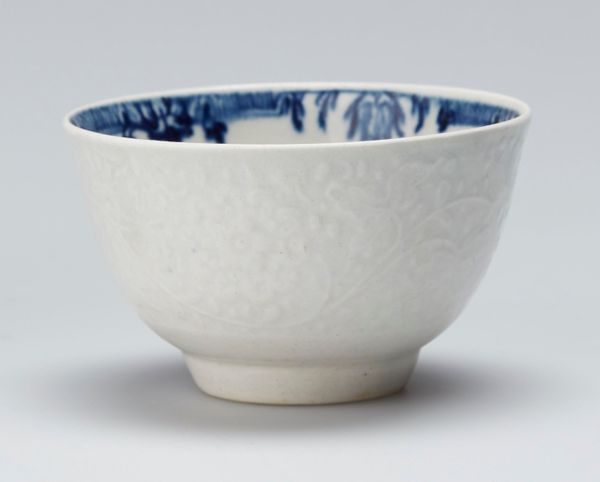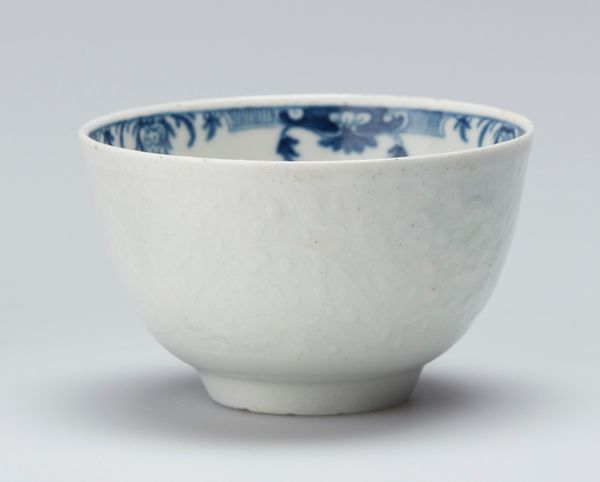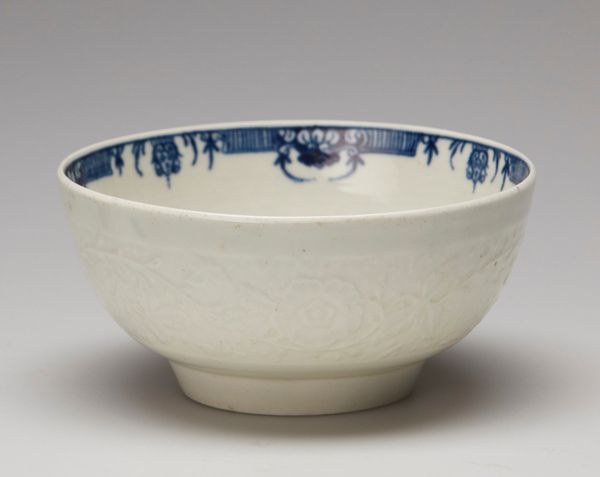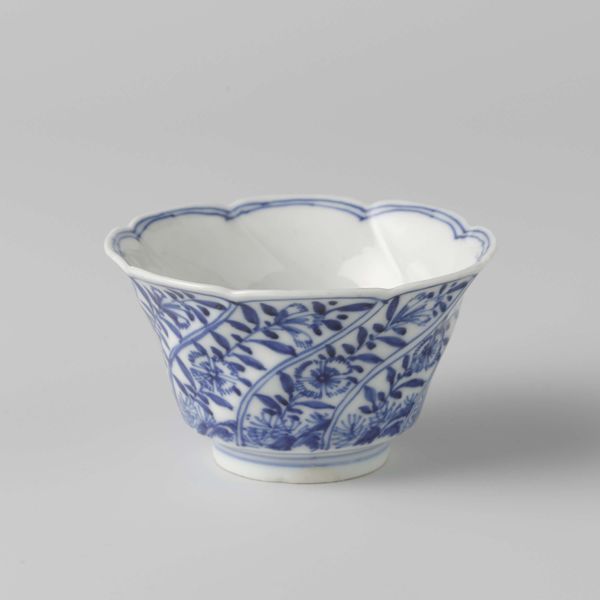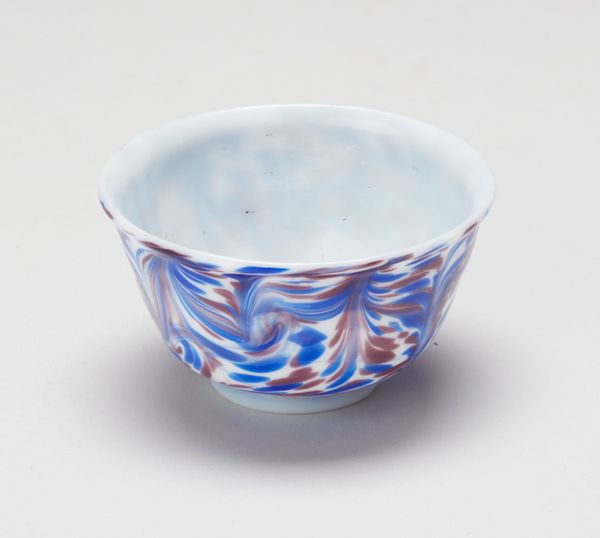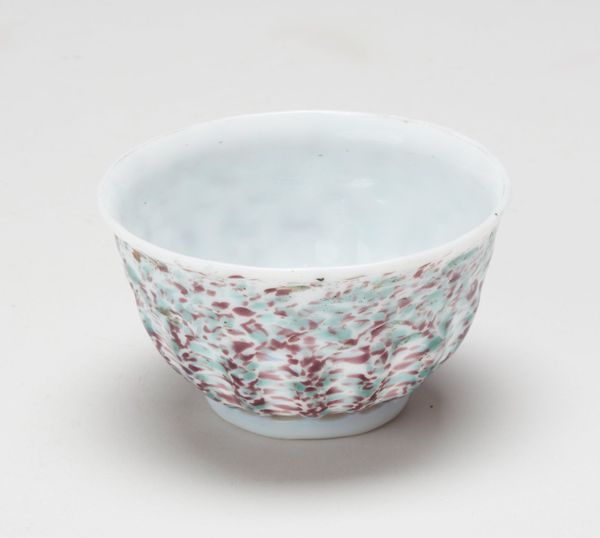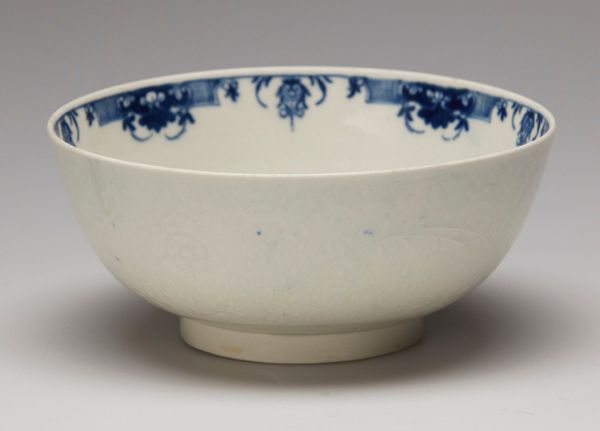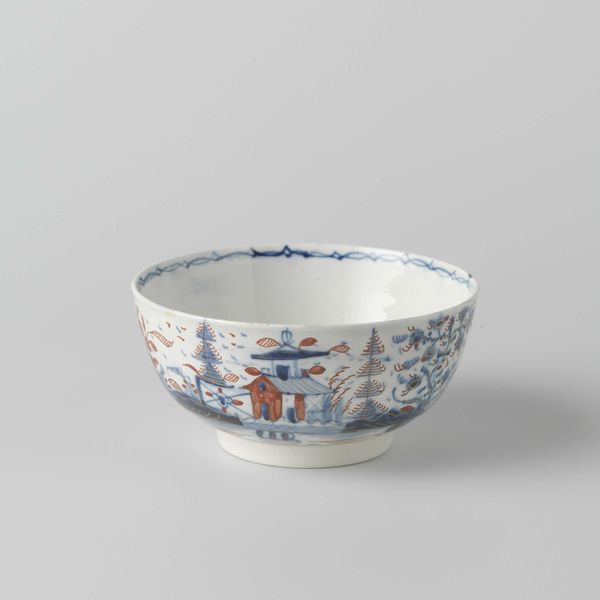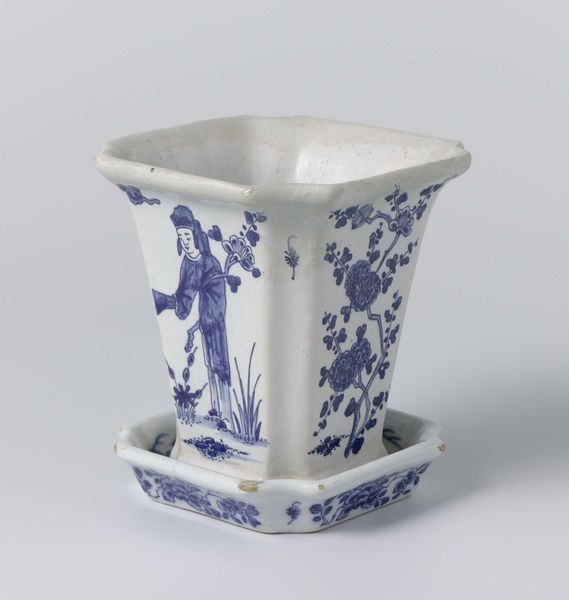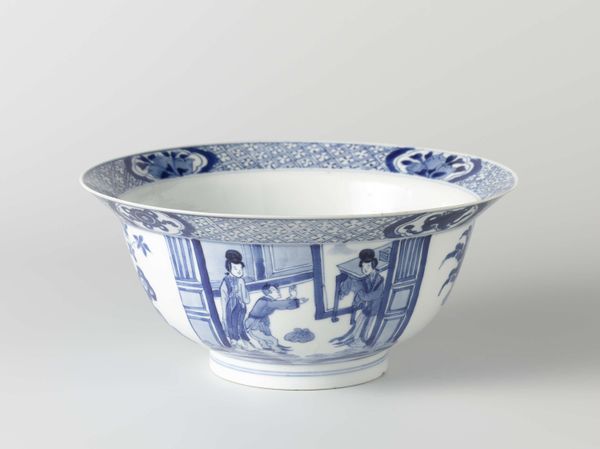
Tea cup c. 18th century
0:00
0:00
ceramic, porcelain
#
asian-art
#
ceramic
#
porcelain
#
geometric
#
ceramic
#
decorative-art
Copyright: Public Domain
Editor: Here we have an 18th-century teacup made of porcelain by the Worcester Porcelain Works. It looks delicate but also like something used every day. What story can you find in the making of this piece? Curator: This unassuming teacup reveals a fascinating story about labor and trade. Porcelain, particularly during the 18th century, was a coveted material. Examining this teacup closely, we should think about the kaolin clay required and the process that transformed raw materials into a finished, highly valued object. Editor: So, the cup's value lies not just in its beauty but in the work and resources required? Curator: Exactly. The cobalt blue decoration, likely imitating Asian ceramics, tells us about global trade routes and the circulation of ideas. The Worcester factory, by mastering porcelain production, participated in this system, but also relied on the labor of skilled artisans. How does thinking about the object this way shift your view? Editor: I guess I hadn't considered the labor involved. I was just thinking about drinking tea! So, by looking at the materials and who made it, we're uncovering a story of industrial production. Curator: Precisely. We're looking beyond the aesthetic to understand the social and economic forces at play in creating and consuming objects like this teacup. The global implications become clear, reshaping our view of its cultural value and historical importance. Editor: That’s a totally different way to appreciate a simple teacup. It's a product of so much more than just art. Curator: Indeed, it’s a reminder to question how things are made, by whom, and to whose benefit. This object encourages reflection on consumption and material culture itself.
Comments
No comments
Be the first to comment and join the conversation on the ultimate creative platform.

